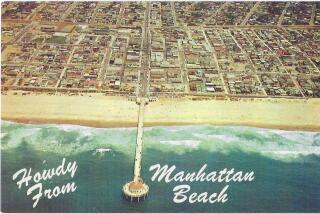Tower of Wooden Pallets a monument to eccentricity
Even the National Enquirer was taken aback after the city of Los Angeles designated Daniel Van Meter’s Tower of Wooden Pallets a historical landmark.
A photo spread of the Sherman Oaks structure was accompanied by a headline that said, “No kidding! This pile of junk is a historic monument!”
Robert Winter, a former member of the Cultural Heritage Commission, joked later that the 1978 vote might have been influenced by fumes emanating from the pallets, which were discards from a brewery.
“Maybe we were drunk,” said Winter, a prominent architectural historian.
Family members, who shared ownership of the property where the 22-foot tower stood and wanted to sell the land to developers, agreed with the Enquirer’s appraisal of Van Meter’s backyard creation.
But Van Meter, who lived alone, wouldn’t budge.
“I have a place where it is quiet, despite the apartments, the noise of the boulevard and the hum and screeches of the rat race on the [San Diego] freeway 200 feet away,” he told The Times in 1988.
Van Meter, who claimed that he was related to John Quincy Adams and the Wright brothers, was no stranger to controversy.
In 1942, he and a brother, Baron, were pursued by authorities for failing to register as subversives, as the law then required. The Van Meters were considered dangerous because they allegedly belonged to a group with ties to the pro-Nazi German American Bund.
Baron Van Meter surrendered while wearing a top hat, according to news reports, while Daniel Van Meter donned a 10-gallon hat. Both served time in prison, though their convictions were later reversed. Baron went on to become a noted square-dancer known as Cacti Pete as well as a collector of rare beer cans.
In 1951, Daniel Van Meter came into possession of the pallets that would give him a measure of fame. He saw them stacked outside a Schlitz brewery and offered to take “a few.” The brewery dumped five truckloads’ worth at his house.
“I had to do something with them,” said Van Meter, an artist with a practical side.
Working without a diagram (or permit), he stacked them in concentric circles, creating a cone-like structure with outside walkways. He told the Daily News that the tower was approved by building inspectors, one of whom quipped that he should house a giraffe inside.
A pack rat, Van Meter also filled his backyard with wooden wagons, junked cars, a 1938 bus, an old outhouse, a tur- ret from a battleship and a gasoline pump -- everything including a kitchen sink, it seemed.
He once was called as a witness in a murder trial because he had found the victim’s remains while sifting through a trash bin in search of cardboard boxes.
“If there weren’t crazy people like me, there wouldn’t be any museums,” he declared.
Legal problems with the tower began in 1977 when fire inspectors termed it “an illegally stacked lumber pile” and ordered it torn down.
So Van Meter appealed to the Cultural Heritage Commission for landmark status.
“In a few years,” he wrote, “this piece of the good earth may be covered by apartments for the storing of surplus people. In the meantime, let this strange structure be, let it continue to be a haven of rest for an individual, that endangered species.”
The commission agreed.
“It’s interesting that we also declared the Hollywood sign to be a monument because no other city would do that,” Winter, the architectural historian, reflected. “We kind of like to reward eccentricity.”
But as Van Meter aged, his creation became termite-infested and unsteady -- the leaning tower of Sherman Oaks.
He died in 2000 at age 87, and his heirs set in motion plans to sell the land to a developer. The process was slowed by the tower’s landmark status, which required further reviews. At last the city ruled that although the tower might be one of a kind, it was without artistic merit.
Van Meter’s heirs sold the 1.4-acre property for $4.5 million, and the tower was bulldozed in 2006.
“It was in terrible shape,” said Frank Liu of the Westgate Group, the developer that is building 98 apartment units on the site. “It was full of termites, rats and cats.”
Per conditions of the sale, Liu said, a display “to memorialize the tower” will be placed in the lobby.
A sign fronting the construction site points out that the units will include “hardwood-inspired flooring,” though it doesn’t say whether the Tower of Wooden Pallets was the inspiration.
The apartments will be ready for the storing of people in a few months.
--
More to Read
The biggest entertainment stories
Get our big stories about Hollywood, film, television, music, arts, culture and more right in your inbox as soon as they publish.
You may occasionally receive promotional content from the Los Angeles Times.










